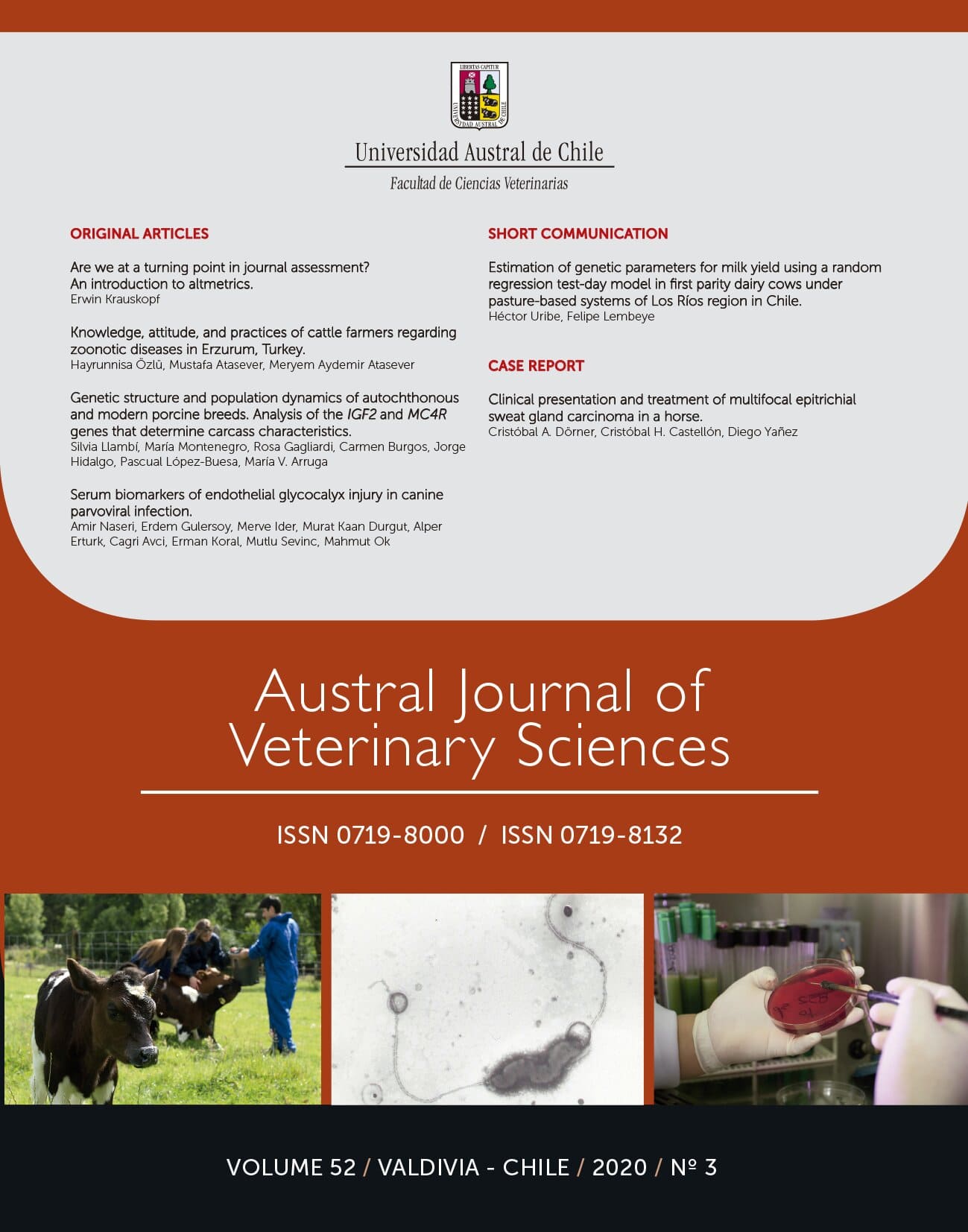Genetic structure and population dynamics of autochthonous and modern porcine breeds. Analysis of the IGF2 and MC4R genes that determine carcass characteristics
Contenido principal del artículo
Resumen
To know the genetic situation of the Pampa Rocha, Celta, Bizaro Portuguese, Duroc, Iberian Extremeño and Iberian Andalusian porcine populations, their genetic structure and population dynamics were studied on the IGF2 and MC4R genes, which determine meat characteristics and quality. The degree of genetic variability (He = 0.2511 in Pampa Rocha; 0.0278 in Celta; 0,1453 in Bizaro Portuguese; 0.3719 in Duroc; 0.0764 in Iberian Extremeño and 0.0384 in Iberian Andalusian), genetic distance, and the presence or absence of consanguinity were studied. The Fis values were positive for the Duroc population (0.00426) indicating a very low inbreeding, the rest of the populations did not present consanguinity. Significant deviations (P ≤ 0.05) in the Hardy-Weinberg (HW) equilibrium were obtained for the IGF2 locus in Celta, Iberian Extremeño, and Iberian Andalusian populations with the G allele fixed, while the Bizaro Portuguese, Pampa Rocha, and Duroc populations presented polymorphism, the G allelic frequency was much higher than A allele, except in the Duroc breed (0.15). These findings could help breeders to increase the presence of the A allele for the improvement of muscle mass and reduction in the back-fat thickness in this breed. All the studied populations presented polymorphism for the MC4R locus with different frequencies for each allele. Furthermore, these results could allow developing strategies against anthropogenic activities that hinder the conservation of the biodiversity of these porcine breeds.

